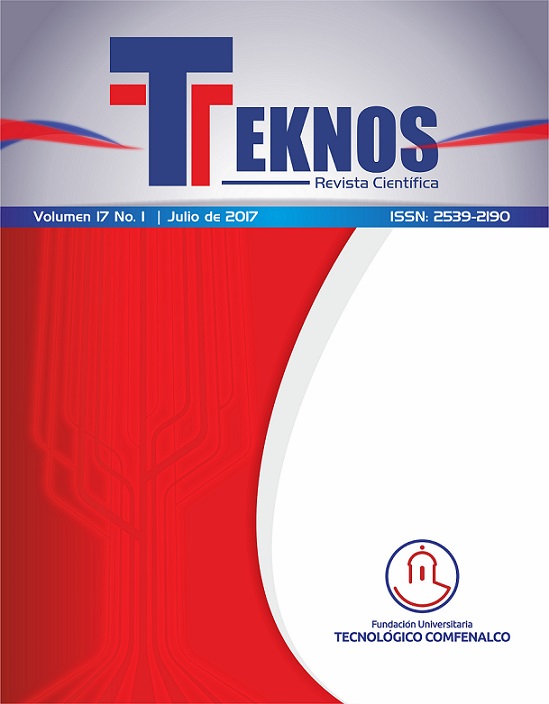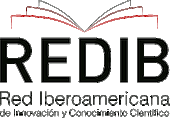Program for energy management in the educational institutions of the department of Tolima
DOI:
https://doi.org/10.25044/25392190.886Keywords:
active energy, energy management, management indicators, energy saving.Abstract
project aims to develop a pilot program for energy management that allows to enhance the performance of finantial, enviromental, social, operational and organizational factors of educational institutions in the Tolima State, taking as case study the school Champañat in Ibagué city. The collected results, are: the energy characterization of the school; the definition of the management indicators such as: energy consumption rate of 1,01 kWh/month-m², installed power rate per total area of 16,18 W/m², energy consumption rate of 8,18 kWh/month-person, installed power rate of 130,96 W/person, carbon footprint of 2.100 kg CO₂e/month, emission rate per building area of 0,19 kg CO₂/month-m²e, emission rate of 1,54 kg CO₂/month-person.; the training of 105 people among administrative assistants, professors and students in energy management and a proposal of a pilot program for the schools in Tolima department; additionally, three short term proposals were developed, one (1) in the medium term and two (2) in the long one; estimating an energy saving of 38,19% monthly and a carbon footprint reduction of 12 tons of CO₂e annually.Downloads
References
Álvarez, S., Blanquer, M., & Rubio, A. (2014). Carbon footprint using the Compound Method based on Financial Accounts. The case of the School of Forestry Engineering, Technical University of Madrid. Journal of Cleaner Production, 66, 224-232.
Arambula Lara, R., Pernigotto, G., Cappelletti, F., Romagnoni, P., & Gasparella, A. (2015). Energy audit of schools by means of cluster analysis. Energy and Buildings, 95, 160-171.
Bunse, K., Vodicka, M., Schönsleben, P., Brülhart, M., & Ernst, F. O. (2011). Integrating energy efficiency performance in production management e gap analysis between industrial needs and scientific literature. Journal of Cleaner Production, (19), 667-679.
Campos Avella, J. C., Gómez Dorta, R., & Santos Macías, L. (1997). La Eficiencia Energética en la Gestión Empresarial. Cien Fuegos, Cuba: Universidad de Cien Fuegos.
Dávila Collaguazo, F. J., & Varela Rosario, D. S. (2014). Determinación de la huella de carbono en la Universidad Politécnica Salesiana, Sede Quito, Campus Sur. Quito: Universidad Politécnica Salesiana.
Dias Pereira, L., Raimondo, D., Paolo Corgnati, S., & Gameiro da Silva, M. (2014). Energy consumption in schools – A review paper. Renewable and Sustainable Energy Reviews, 40, 911-922.
Dobes, V. (2013). New tool for promotion of energy management and cleaner production on no cure, no pay basis. Journal of Cleaner Production(39), 255-264.
Economou, A. (2012). The use of natural gas and geothermal energy in school units. Greece: A case study. Renewable and Sustainable Energy Reviews, 16(2), 1317-1322.
Gobierno Nacional. (2001). Ley 697. Bogotá.
Gobierno Nacional. (2003). Decreto 3683 de 2003. Recuperado el 11 de Junio de 2014 de http://www.alcaldiabogota.gov.co/sisjur/normas/No
rma1.jsp?i=11032
Introna, V. C., Benedetti, M., & Biagiotti, S. (2014). Energy Management Maturit y Model: an organizational tool to foster the continuous reduction of energy consumption in companies. Journal of Cleaner Production, (83), 108-117.
Kim, T.-W., Lee, K.-G., & Hong, W.-H. (2012). Energy consumption characteristics of the elementary schools in South Korea. Energy and Buildings, 54, 480-489.
N. Larsen, H., Pettersen, J., Solli, C., & G. Hertwich, E. (2013). Investigating the Carbon Footprint of a University - The case of NTNU. Journal of Cleaner Production, 48, 39-47.
Norma Técnica Colombiana (NTC). (10 de Junio de 2008). Norma NTC 5001. Recuperado el 31 de Enero de 2015, de http://tienda.icontec.org/brief/NTC5001.pdf
Organización Internacional de Normalización (ISO). (Junio de 2011). Documento resumén ISO 50001. Recuperado el 4 de Octubre de 2013, de http://www.iso.org/iso/iso_50001_energy-es.pdf
Ozawa-Meida, L., Brockway, P., Letten, K., Davies, J., & Fleming, P. (2013). Measuring carbon performance in a UK University through a consumption-based carbon footprint: De Montfort University case study. Journal of Cleaner Production, 56, 185-198.
Pinzón C., J. D., Corredor R., A., Santamaría P., F., Hernández M., J. A., & Trujillo R., C. L. (2014). Implementación de indicadores energéticos en centros educativos. Caso de estudio: Edificio Alejandro Suárez Copete-Universidad Distrital Francisco José de Caldas. Revista EAN, (77), 184-201.
San Miguel, P. A. (2009). Calidad. Madrid: Paraninfo S.A.
Skip Laitner, J. A. (2013). An overview of the energy efficiency potential. Environmental Innovation and Societal Transitions, (9), 38–42.
Torres E., D. (2002). Plan de eficiencia energética para una unidad educativa: Colegio Adventista ciudad de Quito (Tesis de pregrado). Quito: Universidad Internacional SEK.
Townsend, J., & Barrett, J. (2013). Exploring the applications of carbon footprinting towards sustainability at a UK university: reporting and decision making. Journal of Cleaner Production, 1-13.
Unidad de Planeación Minero Energética (UPME) (Agosto de 2013). Programa Estratégico Nacional-Sistema de Gestión Integral de Energía. Recuperado el 21 de junio de 2014, de http://www.grisec.unal.edu.co/Boletin4.pdf
Valencia Toro, Y. A., & Vargas Londoño, P. A. (2013). La institución educativa El Retiro evalúa su huella de carbono en el corregimiento de Morelia, una apuesta desde la educación ambiental para la sostenibilidad. Pereira: Universidad Tecnológica de Pereira.
Yan, D., Zhe, T., Yong, W., & Neng, Z. (2011). Achievements and suggestions of heat metering and energy efficiency retrofit for existing residential buildings in northern heating regions of China. Energy Policy, 39(10), 4675–4682.
Zapata Henao, J. L., & González Franco, F. (2014). Uso eficiente y ahorro de energía eléctrica en el colegio Inem Felipe Pérez: Una visión estratégica desde la educación ambiental (Tesis de pregrado). Pereira: Universidad Tecnológica de Pereira.
Downloads
Published
How to Cite
Issue
Section








